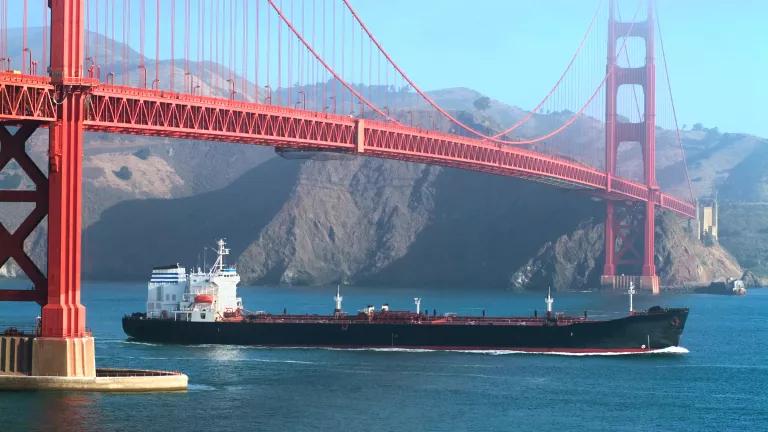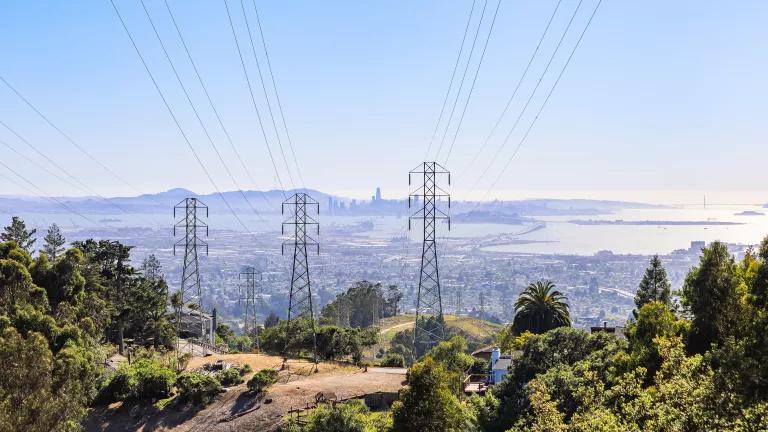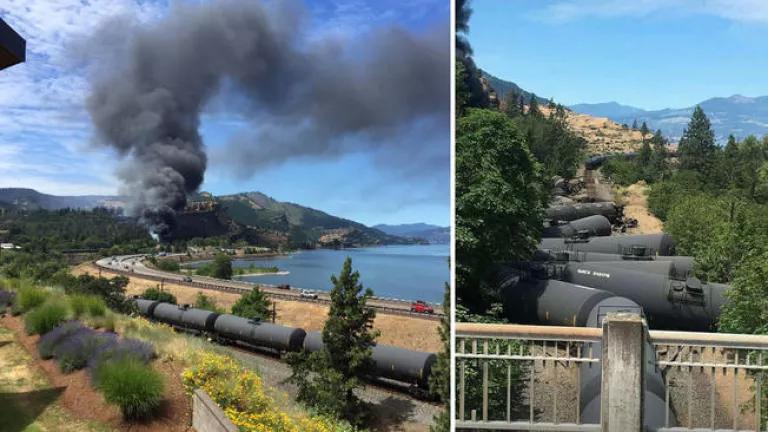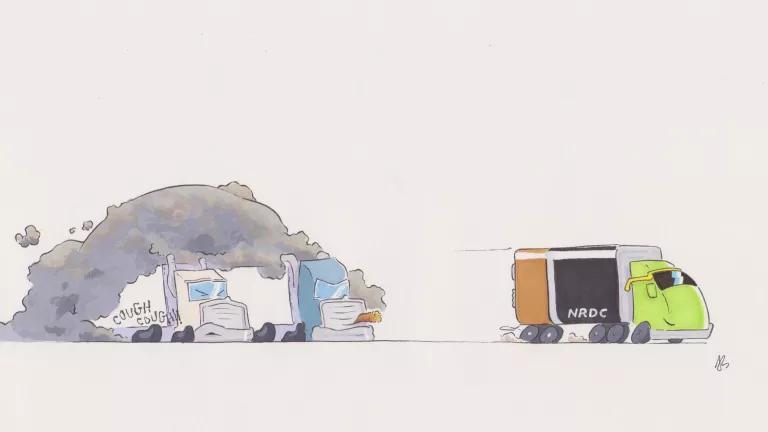California Legislature Passes Landmark Nonfloating Oil Bill
The legislature has rightfully recognized, in passing the bill, that nonfloating oil is a disaster waiting to happen.

Oil tanker in San Francisco Bay
Steve Hamblin/Alamy
On September 12, the California legislature passed AB 936, the state’s landmark legislation defining nonfloating oil and establishing specific procedures to ensure best possible preparedness in the event of a spill. The legislation, authored by Asm. Robert Rivas, is now awaiting signature on Governor Newsom’s desk. Although the bill has seen its share of amendments, it remains an overall strong package to ensure that the state is addressing the spill risks of nonfloating oil as distinct from traditional crude.
The legislature has rightfully recognized, in passing the bill, that nonfloating oil is a disaster waiting to happen. Any oil spill is awful, but a nonfloating oil spill doubly so—as anyone who lived through the catastrophic 2010 tar sands spill in the Kalamazoo River can attest. As the “nonfloating” name implies, certain types of heavy oils—including what the U.S. Coast Guard calls “Group 5” oils—tend to sink rapidly to the bottom when spilled on water, unlike lighter crudes which tend to float for awhile so you have some time to skim them off the surface. The problem is compounded when the heavy oil is diluted for transport with lighter substances like natural gas condensate. That’s what’s done with Canadian tar sands crude, which has the consistency of peanut butter when it comes out of the ground and can’t be put into a ship or rail car without heat or dilution. Under current California law, this diluted oil would be classified as a lighter crude (“Group 3” or “Group 4”) for spill preparedness purposes; but the diluent would evaporate in a cloud of toxic fumes, leaving the heavy oil component to sink to the bottom.
Some nonfloating oil is already coming to California, and the worry is that it’s only the tip of the iceberg. California refineries are configured to process heavy crude, since that’s what’s generally produced here. But as California’s crude oil production continues to slow down (we’ve dropped from 3rd to 7th on the list of oil producing states since 2016), the oil industry is bringing in heavy crude from elsewhere—like Mexico, Venezuela, and the Canadian tar sands. To make matters worse, Canadian Prime Minister Trudeau approved the Trans Mountain Pipeline expansion in June, which could result in a massive influx of Canadian heavy crude to west coast refineries.
AB 936 includes several key provisions to address this increasing nonfloating oil threat:
- Defining nonfloating oil. The AB 936 definition of nonfloating oil is key in and of itself, because it focuses California on the specific problem of diluted heavy oil that current crude categories (Groups 3, 4, 5 etc.) don’t accurately capture. The legislation also affords the Office of Spill Prevention and Response (OSPR) discretion to expand the definition if necessary.
- Requiring nonfloating oil contingency planning. AB 936 requires OSPR to include provisions to address nonfloating oil in its revised spill contingency plan; and to conduct a technology workshop on the topic of nonfloating oil spill cleanup. It must also identify a category of Oil Spill Response Organizations (OSROs) capable of responding to a nonfloating oil spill, and update the qualifying criteria for such OSRO’s based on (among other things) current U.S. Coast Guard standards for nonfloating oil OSROs and information gained from the workshop. Tanker and rail operators carrying nonfloating oil in California will then be required to identify one of these qualified OSRO’s as part of their contingency planning process.
- Providing enhanced information requirements. AB 936 builds on the California Energy Commission’s current crude oil reporting system by requiring that operators transporting oil through California provide comprehensive information concerning it—including its origin, destination, trade name, and whether or not it is nonfloating. The information will be provided to OSPR and to first responders as needed; and compiled into a quarterly report for the public, so that people can know what kinds of oil (including nonfloating) are being transported through communities on a regular basis. The goal is to avoid a repeat of what happened in the Kalamazoo River spill, where responders didn’t know tar sands oil was involved until it had begun to sink, because the transporter had lied about that fact.
California is not the first state to address nonfloating oil in legislation—Washington enacted nonfloating oil legislation in 2018, which like AB 936 requires consideration of nonfloating oil in the contingency planning process. Washington also has a statute in place requiring oil transport notification. However, several aspects of AB 936—including the definition of nonfloating oil, the state-level requirements for a nonfloating oil OSRO rating category, and reporting to communities regarding nonfloating oil routes—are groundbreaking.
As a co-sponsor of AB 936 together with the San Francisco Baykeeper, NRDC is grateful to Asm. Rivas for his leadership on shepherding the bill this far. We also appreciate the leadership from Senator Wiener who managed the bill in the Senate, and Assembly Members Chiu and Limon who are co-authors. And we’re grateful for the nearly two dozen environmental, environmental justice, and community groups who lent their support to AB 936. Thanks to our collective efforts, California is now poised to emerge as a leader in nonfloating oil preparedness, and we are hopeful that Governor Newsom will take the bill across the finish line by signing it into law immediately.




